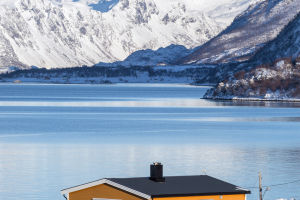Reduce Deforestation
The Council of the European Union and the European Parliament reached a tentative agreement on a legal proposal to prohibit the sale of commodities involving deforestation in the raw materials in the EU or export from the EU.
According to a statement issued by the European Council on the same day, the provisional agreement establishes mandatory due diligence rules for all operators and traders who sell or export commodities such as palm oil, timber, coffee, cocoa, rubber, and soybeans in the EU market.
That is, after December 31, 2020, only goods produced on land that has not suffered deforestation or forest degradation will be allowed to enter the EU market or be exported from the EU.
The new rules also apply to derivative products using these raw materials, including chocolate, furniture, printing paper, and some products using palm oil, such as personal care products.
The EU will conduct a review after two years to determine whether additional goods need to be covered.
The environment minister of the Czech Republic, which holds the EU's rotating presidency, said that the EU is a major consumer market and trader of bulk commodities such as cocoa, soybeans, and timber.
The new rules aim to ensure that consumers do not contribute to the further degradation of forest ecosystems when purchasing these goods.
The new regulations still need to be formally adopted by the European Council and the European Parliament. Failure to comply will result in a fine equivalent to at least 4% of its annual turnover in the EU market.
What are the other causes and consequences of deforestation
Reason:
1. Expand the area of cultivated land.
2. Demand for fuel wood.
3. Demand for industrial wood such as papermaking.
4. Timber for construction and demand for wood for furniture.
5. Land occupied by road construction, building construction, etc.
As a result:
1. Soil erosion
After the forest is cut down, the bare land cannot withstand the wind, rain, and sun. On sunny days, due to sun exposure, the ground temperature rises, and the process of decomposing organic matter into soluble mineral elements is accelerated.
On rainy days, the rainwater washes directly, bringing the fertile topsoil and mineral elements into the river.
2. Quicksand deposits, clogging reservoir channels
Due to quicksand siltation, the river bed in some places in the lower reaches of many rivers is 12 meters higher than the land outside the embankment, which seriously threatens the safety of people's lives and property.
3. Environmental deterioration, frequent disasters
Man-made destruction has greatly reduced forest coverage in various places. From the 1960s to the 1970s, an average of 6 years of drought occurred every 10 years, causing 21 rivers to stop flowing, 3/4 of the farmland to suffer from drought and reduced production, and 25 reservoirs to dry up.
In particular, the destruction of forests has caused some rare animals to lose their breeding bases. Rare animals such as the South China tiger and the black crested gibbon are on the verge of extinction due to the destruction of their habitats.
4. Destruction of ecological balance
Animals living in the forest are homeless and have to find another forest, and some may even extinct.
5. Reduced Oxygen Levels
Plant photosynthesis decreases, resulting in a large increase in carbon dioxide and greatly reduced oxygen content.


